 |
 |
 |
 |
 |
 |
 |
 |
 |
| Ghettos |
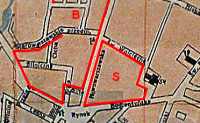 |
| Ghetto Map |
Like in all other occupied towns anti-Jewish actions took place immediately: Lootings, expropriations, forced labour and killings were the order of the day. Soon a Judenrat was established. Its first chairman was Moses Pelc who refused to collaborate with the SS. Therefore he was deported to Auschwitz. Hermann Levy became his successor, he was killed in September 1942 by the SS.
On 31 March 1941 the Kielce Ghetto was established. Jews from the surrounding villages were forced to move into the ghetto. A wooden fence combined with barbed wire surrounded the ghetto which consisted of two parts: The Big Ghetto, marked by these streets: Orla, Piotrkowska, Nowowarszawska, Pocieszki and Radomska, and the Small Ghetto - the triangle between these streets: St. Wojciech square, Bodzentynska and Radomska. 500 buildings were in the ghetto, for approximately 15,000 people. Now around 27,000 Jews had to share the rooms. An unbearable situation, especially after arrival of 1,004 Jews from Wien (they left Wien on 19 February 1941).
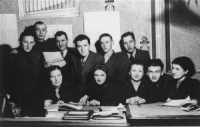 |
| Kielce Ghetto Judenrat |
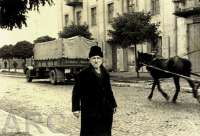 |
| A Jew in Kielce, in 1939 |
Soon there was no more official religious life in the ghetto. The synagogue was changed into a storage for grain and furniture. The prayers' homes were demolished. People who tried to organize a secret religious life were reported to the police by Germans or Jewish collaborators.
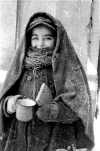 |
On the first day around 7,000 people were deported to Treblinka. Every Jew could take along 20 kg luggage but in fact many people were so surprised by the "action" that they went to the assembly point without suitcases. On Okrzeja Street they were selected: Old people, invalides and sick were shot on the spot.
On 22 August 1942 500 Jews were executed in course of the selection. On 23 August 1942 the SS ordered to kill all patients from the Jewish hospital. Jewish doctors were forced to kill hundreds of patients in the hospital, by lethal injections.
Around 20,000 - 21,000 Jews were deported to Treblinka extermination camp where they perished. Around 1,200 Jews were killed in the ghetto during the "action". The SS plundered the Jewish property: Clothings, linen, equipment of workshops and furniture were stored in special buildings in the center of Kielce.
SS-Hauptsturmführer Ernst Thomas and Hauptmann Hans Geier directed the ghetto liquidation.
 |
The camp existed until spring 1943. Until that time groups of Jews were deported to work camps in Starachowice, Skarzysko-Kamienna, Pionki and Blizyn. In March 1943, during a selection in the Kielce camp, the SS killed all Jewish doctors and their families, and in May 1943 a group of children. After the May selection the Germans established several work camps:
1. Mlynarska Street - Hasag Granat Werke which existed until August 1944. 400-500 prisoners were forced to work in quarries, workshops and an ammunition factory.
2. Mlynarska Street - Henrykow Factory (wood processing). This camp had even worse conditions. During its existence around 150 Jews were killed.
3. Ludwigshütte (foundry) - The camp existed until summer 1944. 200 - 300 prisoners lived within the factory.
In August 1944 all camps were closed and the prisoners evacuated to Auschwitz, Czestochowa (Hasag Werke) and Buchenwald KZ. Only from the camp Hasag Granat Werke in Kielce 28 Jews could escape during the evacuation. They joined the partisans or hid in villages near Kielce.
45 Jewish children who survived the ghetto and the camps were discovered and shot at the Jewish cemetery.
After the war around 150 Jews left their hidings and returned to Kielce. They found a place in their former parish hall, waiting for a possibility to emigrate to Palestine.
In June 1946 they were accused of having committed a ritual murder on a missing Polish boy. On 1 July 1946 a furious crowd gathered round the building and on 4 July 1946 they killed 42 Jews. The drama could be stopped only by Polish troops. Seven ringleaders and killers were sentenced to death. The missing boy turned up again in a nearby village...
Until today historians discuss who provoked this anti-Jewish riot. Many inhabitants participated in the pogrom and around 100 people were arrested by the communist police; among them people who did not participate in the crime but being known as anti-communists. Until today some people suspect that the pogrom was provoked by communists for eliminating opponents of the new regime in Poland.
As a result most remaining Jews in Poland and other communist countries emigrated mainly to Palestine / Israel. For the minority that remained normal Jewish life in Poland had changed forever.
Photos:
USHMM
Sources:
Encyclopedia of the Holocaust
Robert Kuwalek
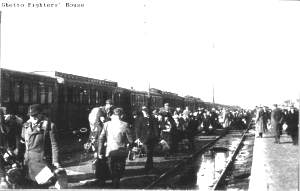
|
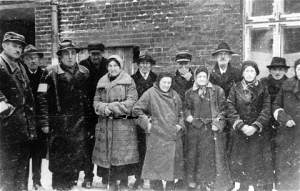
|
| Jews from Vienna who were deported to Kielce | Austrian Jews in Kielce |
 |
| 27,000 Jews lived in the ghetto |
© ARC (http://www.deathcamps.org) 2005